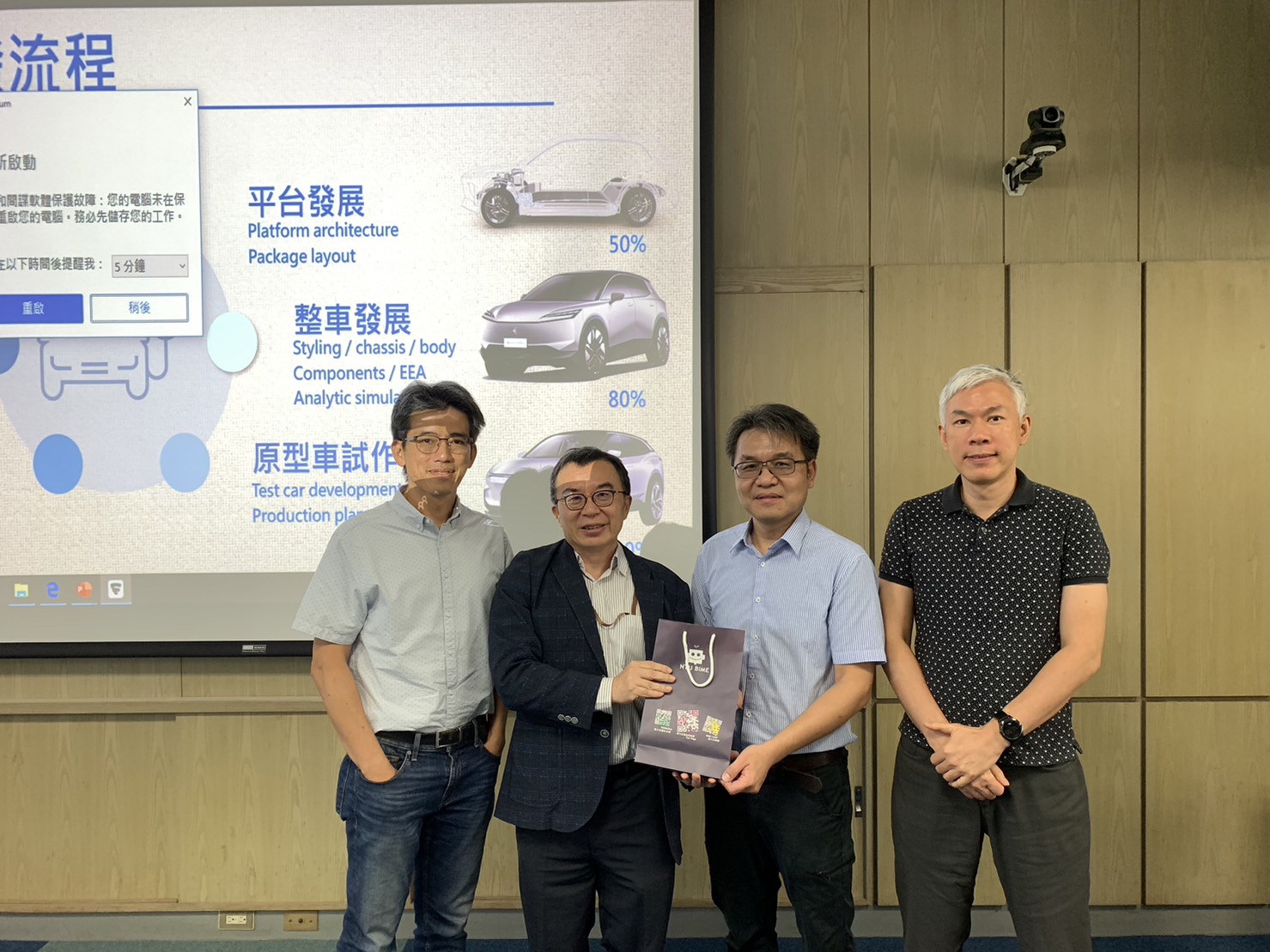
本場演講聚焦於電動車的廠業概述,並引申探討未來可能的發展以及學術應用的機會。每一台車經過完整開發循環需要花費至少80億台幣做開發費用,故開發中的每個環節是必須要環環相扣,確保生產的品質以及成本處於可控範圍內。其中,電動車的架構面來探討,消費者比較關注於售價、品牌和車輛造型的範疇,但背後的操控性、能耗比、維護成本及電池回收等都是廠商需要和政府合作努力做出規範的。故電動車市場並不是只需考慮消費者市場,針對環境的影響,充電裝的設置等議題也需要廠商去和多方機構做洽談。除此之外,也比較了油車及電動車,在馬達扭力的曲線比較圖,和從油車一步步到接近電動車的車內架構圖(ICE, HEV, PHEV, BEV),最後更深入討論車內元件布局的細節探討,講解車用電池和EDU等內部架構介紹。產業布局面,經理也透過全球地圖視覺化標出各個國家間電動車使用總攬,說明電動車品牌的策略布局,並探討電動車推動所需的重要因子。除了單純的技術含量,還有須顧及各個區域利益、安全環保及魅力性能。
撰寫者: 碩士班學生吳松濤
The main focus of the keynote speech is on an overview of the electric vehicle industry, with an extended discussion on possible future developments and opportunities for academic applications. Developing each vehicle through its complete development cycle requires at least 8 billion New Taiwan Dollars in development costs, so every stage of development is crucial to ensure the quality and cost of production remain within manageable limits. When it comes to the design of electric vehicles, consumers tend to prioritize factors such as price, brand, and vehicle design. However, issues like handling, energy efficiency, maintenance costs, and battery recycling are areas where manufacturers need to cooperate with the government to establish regulations. Thus, the electric vehicle market is not solely about the consumer market. It also involves negotiations with various organizations regarding environmental impact and charging infrastructure.Additionally, a comparison is made between conventional gasoline vehicles and electric vehicles, with charts showing motor torque curves, and a step-by-step comparison of the internal vehicle architecture, progressing from Internal Combustion Engine (ICE) to Hybrid Electric Vehicle (HEV), Plug-in Hybrid Electric Vehicle (PHEV), and Battery Electric Vehicle (BEV). Finally, a detailed discussion delves into the layout of components inside the vehicle, explaining the internal structure, including the vehicle's battery and Electronic Control Unit (EDU).On the industrial front, the presenter also uses a global map for a visual representation of electric vehicle usage across different countries, outlining the strategic layout of electric vehicle brands, and discussing the key factors necessary to drive electric vehicle adoption. Besides just technical content, considerations encompass regional interests, safety, environmental sustainability, and performance.
Author: Master student: Song-Tao Wu